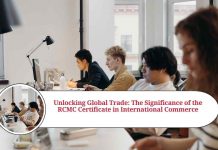Introduction:
Losing a loved one is a difficult time, and dealing with legal matters can add to the stress. If you find yourself in a situation where you need to establish your rights as a legal heir or administrator of a deceased person’s estate, obtaining a succession certificate is a crucial step. In this blog, we will guide you through the process of obtaining a succession certificate, providing you with a clear understanding of the necessary steps involved.
- Understand the Purpose and Importance: A succession certificate is a legal document issued by a civil court to establish the authenticity of a deceased person’s estate and to determine the rightful heirs. It enables the legal heirs to transfer or inherit assets, settle debts, and execute other financial matters.
- Determine the Jurisdiction: Identify the appropriate jurisdiction where the succession certificate needs to be obtained. The jurisdiction is usually the court where the deceased person resided at the time of their death or where the property is situated.
- Gather Required Documents: To apply for a succession certificate, gather the following essential documents:
- Death certificate of the deceased
- Legal heirship certificate or family tree
- Identity proof of the applicant(s)
- Address proof of the applicant(s)
- Affidavit stating the time and place of death, relationship with the deceased, and details of other legal heirs
- Copy of the will (if applicable)
- List of assets and liabilities of the deceased
- Prepare the Application: Prepare an application for the succession certificate. The application should include the relevant details, such as the name and address of the deceased, the details of the assets and liabilities, and the names and addresses of all legal heirs.
- Consult an Advocate: Seek legal advice from an advocate who specializes in succession matters. They will help you review the application, ensure all necessary documents are in order, and guide you through the entire process.
- Submit the Application: File the application along with the required documents at the appropriate civil court. Pay the prescribed court fee, and obtain a receipt for future reference. The court will assign a case number and a hearing date.
- Attend the Court Hearing: On the scheduled hearing date, appear before the court along with the advocate and any other legal heirs. Present your case, answer any questions from the court, and provide any additional documents or information if required.
- Publication of Notice: After the court hearing, the court may order the publication of a notice in a local newspaper or gazette, inviting objections or claims against the estate. This allows any interested parties to come forward within a specified period.
- Issuance of Succession Certificate: If no objections are raised or the court is satisfied with the evidence provided, it will issue the succession certificate. The certificate will contain details of the deceased, the legal heirs, and their respective shares in the estate.
- Execute Legal Processes: Once you obtain the succession certificate, you can use it to transfer or inherit assets, settle debts, close bank accounts, and carry out other financial transactions as required.
Conclusion:
Obtaining a succession certificate is a significant step in the process of administering the estate of a deceased person. While the procedure may vary depending on the jurisdiction, the general steps mentioned above provide a roadmap to help you navigate through the process. It is essential to seek legal advice and ensure all the required documents are in order to streamline the application process. Remember, patience and persistence are key, and the succession certificate will ultimately help you establish your rights and carry out the necessary financial transactions smoothly.
Read more useful content:
- Occupancy Certificate Online
- ETA Certificate
- Model Approval Certificates
- Legal Metrology Certificate
Frequently Asked Questions (FAQs)
Q1: What is a succession certificate, and why is it important?
A succession certificate is a legal document issued by a civil court that establishes the authenticity of a deceased person’s estate and determines the rightful heirs. It is important because it allows the legal heirs to transfer or inherit assets, settle debts, and carry out other financial matters.
Q2: Who can apply for a succession certificate?
Any person who is a legal heir or administrator of the deceased person’s estate can apply for a succession certificate. The legal heirs may include the spouse, children, parents, or other close relatives.
Q3: Where should I apply for a succession certificate?
The application for a succession certificate should be filed in the appropriate civil court jurisdiction. Generally, it is the court where the deceased person resided at the time of their death or where the property is situated.
Q4: What documents are required to apply for a succession certificate?
The necessary documents include the death certificate of the deceased, legal heirship certificate or family tree, identity proof of the applicant(s), address proof of the applicant(s), affidavit stating the time and place of death and relationship with the deceased, copy of the will (if applicable), and a list of assets and liabilities of the deceased.
Q5: Do I need to hire a lawyer to obtain a succession certificate?
While it is not mandatory, it is highly recommended to consult an advocate who specializes in succession matters. They can provide legal advice, review your application, ensure all necessary documents are in order, and guide you through the process.
Q6: How long does it take to obtain a succession certificate?
The time taken to obtain a succession certificate can vary depending on the complexity of the case, the workload of the court, and other factors. It may take several months to a year or more to complete the process.
Q7: Is it necessary to publish a notice in a newspaper or gazette?
In many cases, the court may order the publication of a notice in a local newspaper or gazette. This is done to invite objections or claims against the estate. It allows any interested parties to come forward within a specified period and ensures transparency in the process.
Q8: Can the succession certificate be challenged or revoked?
Yes, the succession certificate can be challenged or revoked if there are valid reasons and evidence to support the challenge. This usually happens if it is discovered that there was fraud or misrepresentation in obtaining the certificate.
Q9: Can I use a succession certificate to transfer or sell property?
Yes, one of the primary purposes of a succession certificate is to enable the legal heirs to transfer, sell, or inherit property. The certificate serves as proof of their rights and entitlements.
Q10: Can I obtain a succession certificate if there is a dispute among legal heirs?
If there is a dispute among the legal heirs, the court may require additional evidence or documentation to resolve the dispute before issuing the succession certificate. It is advisable to seek legal counsel to navigate through such situations.




















